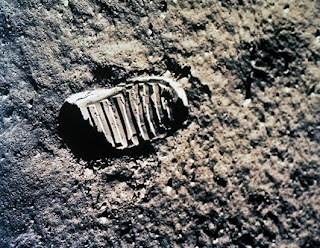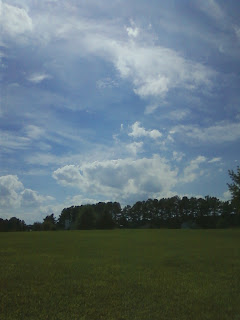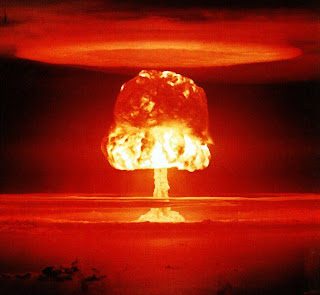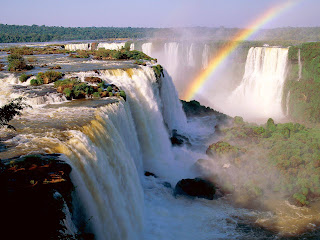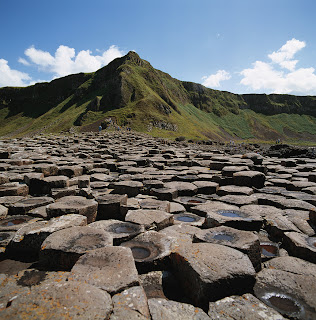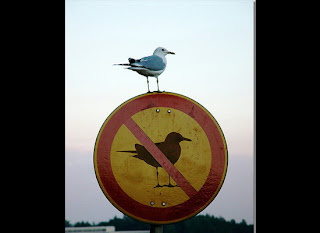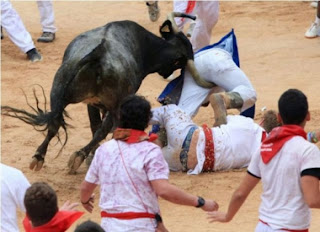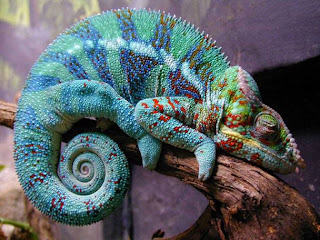Saturday, August 25, 2012
Neil Armstrong dies, 82
Neil Armstrong, the astronaut who became first to walk on the moon as commander of Apollo 11, has died. He was 82 years old.
Armstrong commanded the Apollo 11 spacecraft that landed on the moon July 20, 1969. His first words after becoming the first person to set foot on the surface are etched in history books and the memories of those who heard them in a live broadcast.
"That's one small step for man, one giant leap for mankind," Armstrong said.
(Armstrong insisted later that he had said "a" before man, but said he too couldn't hear it in the version that went to the world.)
The moonwalk marked America's victory in the Cold War space race that began Oct. 4, 1957, with the launch of the Soviet Union's Sputnik 1, a 184-pound satellite that sent shock waves around the world.
Armstrong was among the greatest of American heroes, Obama said in a statement.
"When he and his fellow crew members lifted off aboard Apollo 11 in 1969, they carried with them the aspirations of an entire nation. They set out to show the world that the American spirit can see beyond what seems unimaginable — that with enough drive and ingenuity, anything is possible," Obama said.
The manned lunar landing was a boon to the prestige of the United States, which had been locked in a space race with the former Soviet Union, and re-established U.S. pre-eminence in science and technology.
The 1969 landing met an audacious deadline that President Kennedy had set in May 1961, shortly after Alan Shepard became the first American in space with a 15-minute suborbital flight. (Soviet cosmonaut Yuri A. Gagarin had orbited the Earth and beaten the U.S. into space the previous month.)
"I believe this nation should commit itself to achieving the goal, before the decade is out, of landing a man on the moon and returning him safely to Earth," Kennedy had said. "No single space project in this period will be more impressive to mankind, or more important to the long-range exploration of space; and none will be so difficult or expensive to accomplish."
The end-of-decade goal was met with more than five months to spare.
For Americans, reaching the moon provided uplift and respite from the tumultuous events of the Sixties including the Vietnam War, strife in the Middle East, and social unrest at home.
In all, 12 American astronauts walked on the moon between 1969 and the last moon mission in 1972.
Armstrong was born Aug. 5, 1930, on a farm near Wapakoneta in western Ohio. He took his first airplane ride at age 6 and developed a fascination with aviation that prompted him to build model airplanes and conduct experiments in a homemade wind tunnel.
As a boy, he worked at a pharmacy and took flying lessons. He was licensed to fly at 16, before he got his driver's license.
Armstrong enrolled in Purdue University to study aeronautical engineering but was called to duty with the U.S. Navy in 1949 and flew 78 combat missions in Korea.
After the war, Armstrong finished his degree from Purdue and later earned a master's degree in aerospace engineering from the University of Southern California. He became a test pilot with what evolved into the National Aeronautics and Space Administration, flying more than 200 kinds of aircraft from gliders to jets.
Armstrong was accepted into NASA's second astronaut class in 1962 — the first, including Glenn, was chosen in 1959 — and in 1966, commanded the Gemini 8 mission with David R. Scott as his crewmate. On their fourth orbit, they made the first-ever docking in space with another spacecraft -- a maneuver the still-untested Apollo project would need to get astronauts to and from the lunar surface.
Minutes later, though, the spacecraft began to tumble wildly out of control, apparently because of a broken maneuvering thruster. It was a dangerous moment -- a 6,000-pound ship, moving at 17,500 mph, spinning and turning end-over-end once a second. Armstrong ended the emergency by using a second set of thrusters. Mission Control ordered the astronauts to land as soon as possible, and after 10 hours of flight they splashed down safely in the Pacific.
When Project Apollo began, Armstrong was assigned to command one of the first six flights. NASA had a system for rotating its crews among flights -- one served as backup crew for a mission and then actually flew three flights later -- and nobody knew how many test flights would be needed before the first moon landing could be attempted.
Armstrong was backup commander for the historic Apollo 8 mission at Christmastime in 1968. In that flight, Commander Frank Borman, and Jim Lovell and Bill Anders circled the moon 10 times, and paving the way for the lunar landing seven months later.
It was happenstance that made Neil Armstrong one of the most famous names of the 20th century. If the order of flights had been different, or if Apollo 9 or 10 had run into trouble, Apollo 11 might very well have been a practice run for the first lunar landing.
More than a million people crowded the Florida coast to see the liftoff on July 16th 1969.
Liftoff was flawless, and three days later the astronauts arrived in lunar orbit. On the morning of July 20, Armstrong and Aldrin took their places in the landing ship Eagle, leaving Collins to run the command ship Columbia. They fired Eagle's main engine to slow themselves toward the moon's surface, aiming for a landing site on the Sea of Tranquility.
As they came in on final approach, Armstrong later reported, he saw they were in trouble. Eagle's computer was steering them right toward a crater, with boulders the size of cars. Armstrong took over manual control. Fuel was in short supply, but he hosed out more, skittering a few hundred feet above the lunar surface in search of a clear spot to land.
Finally, Aldrin called out, "Contact light" -- a signal that a five-foot-long metal probe, protruding from Eagle's landing legs, had touched the surface. The ship gently settled. Finally, Armstrong came on the radio.
"Houston, Tranquility Base here, the Eagle has landed."
"Roger, Tranquility," Apollo astronaut Charles Duke radioed back from Mission Control. "We copy you on the ground. You've got a bunch of guys about to turn blue. We're breathing again. Thanks a lot."
After making sure Eagle was in good shape for the return trip, he and Aldrin put on their bulky backpacks and prepared to open the hatch.
It was 10:56 p.m., Eastern Daylight Time, when Armstrong backed down the ladder of the Lunar Module and then planted his left boot in the lunar soil.
"That's one small step for man, one giant leap for mankind," Armstrong said.
Twenty minutes later his crewmate, Buzz Aldrin, joined him, and the world watched as the men spent the next two hours bounding around in the moon's light gravity, taking rock samples, setting up experiments, and taking now-iconic photographs. Their crewmate, Michael Collins, orbited overhead in the Apollo 11 command ship, Columbia. They received a phone call from President Nixon, and planted an American flag. An estimated 600 million people — a fifth of the world's population — watched and listened to the landing, the largest audience for any single event in history.
"The sights were simply magnificent, beyond any visual experience that I had ever been exposed to," Armstrong once said.
Armstrong carried a camera, mounted on the chest of his spacesuit, and took some of the most famous pictures of the century. Aldrin did not have a camera -- so, in one of the ironies of the space age, almost all the still pictures from the Apollo 11 moonwalk are by Armstrong, not of him.
After a fitful night's sleep, the two men lifted off from the lunar surface and rejoined Collins in Columbia. They splashed down safely in the Pacific on July 24, 1969. They were greeted with ticker tape parades, and went on a 22 nation tour.
After that, Armstrong tried his best to resume a private life.
He served for a few years as a NASA manager in Washington. He taught engineering at the University of Cincinnati, not far from his birthplace. He served on corporate boards. He was appointed to the panels that investigated the Apollo 13 accident and the Challenger disaster. He declined almost all requests for interviews, and stopped giving autographs when people sold them for thousands of dollars.
He suffered a minor heart attack in 1991. His wife Jan divorced him in 1994 and he soon married Carol Knight. In 2005 his authorized biographer, James R. Hansen, wrote, "Neil Armstrong today seems to be a very happy man -- perhaps happier than at any other time in his life."
(This post was copied and pasted from several news stories)
Wednesday, August 22, 2012
Clean Dishes Inspire Dirty Limerick
The other day my wife and I were washing dishes when she accidentally splashed some soap suds on me and said something like "Oops I got bubbles on you". Upon hearing the word 'bubbles' this limerick started rolling off my tongue without thinking about it:
There once was a stripper named Bubbles,
Whose very large breasts did give her troubles.
44 double E,
They had to be.
And though she played tennis alone,
She still played doubles.
My wife couldn't believe I just made that up on the spot, but I did. What does she think I am? Some pervert that just sits around thinking up dirty rhymes? . . . . . Well, I did just make it up on the spot. I swear.
There once was a stripper named Bubbles,
Whose very large breasts did give her troubles.
44 double E,
They had to be.
And though she played tennis alone,
She still played doubles.
My wife couldn't believe I just made that up on the spot, but I did. What does she think I am? Some pervert that just sits around thinking up dirty rhymes? . . . . . Well, I did just make it up on the spot. I swear.
20,000 Pageviews! In just 4 years!
I just happened to check my stats and saw brian's free fall had 20,002 pageviews. Granted, that's since I started this blog some 4 years ago, and I know some blogs get that in a week or even in just a day, but even still, it felt good to see that. Like looking down at your speedometer just in time to see it roll from 9,999 miles to 10,000.
Blogger offers things to get your blog noticed by others but I don't do any of that. I just post things when I fell like it, about whatever I feel like. But to those of you who have visited, Thank You and I hope you got some kind of enjoyment from it.
Blogger offers things to get your blog noticed by others but I don't do any of that. I just post things when I fell like it, about whatever I feel like. But to those of you who have visited, Thank You and I hope you got some kind of enjoyment from it.
Sunday, August 12, 2012
A Beautiful Day
It’s a beautiful day. The sun is out. The blue sky is dotted with cottony white clouds. It’s warm, not hot like it has been for most of the last month and a half. There’s just enough of a breeze to throw off what little heat does try to hamper your enjoyment of this beautiful day.
This is a day for lying in the grass, and imagining elephants and horses and ships in those white cottony clouds. A wonderfully relaxing and lazy Sunday like this is conducive to allowing your thoughts to wander towards the irreverent, and hence, you daydream. When I was a child I believed that there was another whole world up on those clouds, and that the people lived in castles and rode dragons, and that they would walk to the edge of their cloud and look down at us ants down here on the ground. How fun and exciting that must be to do. Those lucky cloud people. I would lay there in a field near our home for hours trying to see those cloud people staring back down at me, but I never did.
I wondered why no one else talked about them. After all, the jet planes that streaked through the sky, so very high up leaving new clouds in their wake, surely they must see them. But I never heard about them on TV, and we never talked about them in class. I finally asked my mother and she told me that clouds were like fog and couldn’t hold anything up. I thought that was ridiculous. I could see through fog. Of course it couldn’t bear any weight. But you can’t see through clouds. Obviously they’re thicker. It really made me question my mother’s wisdom and brought into doubt everything she’d ever taught me (in the whole four or five years I‘d been alive that is). So I kept my thoughts about the cloud people to myself.
Over time I began to doubt that they existed. I should have seen at least one by now. Or glimpsed the tip of one of their castle towers. In school we learned about clouds and I came to realize it wasn’t true. But even still, the first time I ever got a chance to fly, when I was nine or ten, and that big jet plane lifted above the clouds, I had to look out that little window for my castles, not really expecting to see any, just wanting to make sure it had all been my imagination. And they weren’t there, and that four or five year old in me was disappointed.
Now, I’m almost fifty years old, and have flown many times in my life and have repeatedly verified the nonexistence of those castles. But as I lay here in the soft green grass of my freshly mown yard, and look up to that beautiful blue sky with the white cottony clouds, I still can’t help but wonder how those cloud people can hide themselves and their castles so well.
Sunday, August 5, 2012
Random Crap
Castle Romeo
Devil's Throat
When I'm dead I don't want to be buried in a scary assed place like this.
What I saw right after he said "Man, you probably shouldn't be eating those".
Rio - if a city can be considered Paradise, this is it.
Someday Im gonna have one of these dogs and I'm gonna name him Roscoe.
Bad Ass Bird
This is what happens to kittens who lose their mittens in my house!
Gives new meaning to getting the bull by the horns
These last six pics don't really need a caption, but if you want one how about
"Daaaammmmn!"
Subscribe to:
Posts (Atom)

